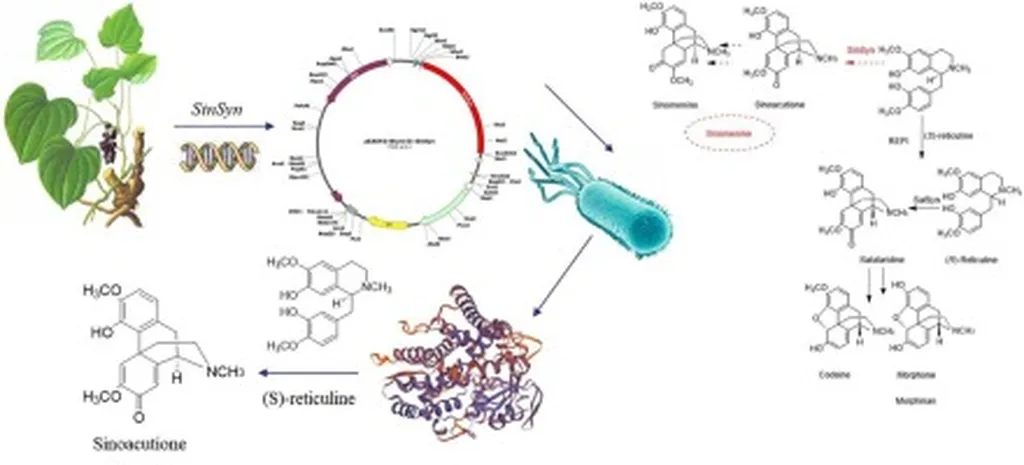In the realm of agritech and traditional medicine, a recent study published in *Scientific Reports* has shed light on the potential therapeutic effects of sinomenine, an alkaloid derived from the plant Sinomenium acutum, on thyroid dysfunction. The research, led by Jiabei Chen from the College of Bioscience and Biotechnology at Hunan Agricultural University, integrates network pharmacology, molecular docking, and molecular dynamics simulations to unravel the complex mechanisms underlying sinomenine’s action.
Thyroid dysfunction, a condition often linked to autoinflammatory responses and immune imbalances, affects millions worldwide. Sinomenine, known for its immunomodulatory and anti-inflammatory properties, has been a subject of interest in traditional Chinese medicine. However, the precise molecular mechanisms of its therapeutic effects on thyroid dysfunction have remained elusive until now.
The study employed a multi-faceted approach to explore these mechanisms. Databases such as GeneCards, PharmMapper, SwissTargetPrediction, and OMIM were used to screen the targets of sinomenine and thyroid dysfunction. Subsequent GO and KEGG enrichment analyses, PPI network construction, and drug-target-pathway network analysis were conducted to map out the potential pathways and targets involved.
“Our findings reveal that sinomenine’s mechanism of action is multifaceted, involving cellular responses to oxidative stress caused by inflammation, the role of nuclear transcription factors in gene expression, as well as processes of cell proliferation and apoptosis,” Chen explained. This complex synergistic effect of multiple pathways suggests a nuanced approach to treating thyroid dysfunction.
Molecular docking experiments further validated these findings, showing that sinomenine and its derivative, 14-episinomenine, exhibit strong binding affinities with key targets such as TNF, STAT3, NFKB1, IL6, SRC, ESR1, and MAPK8. Molecular dynamics simulations confirmed the stability of these binding complexes, indicating a robust interaction between sinomenine and these critical targets.
The implications of this research extend beyond the medical field into the agricultural sector. Sinomenium acutum, the source of sinomenine, is a plant that could see increased demand for cultivation if sinomenine’s therapeutic potential is fully realized. This could open new avenues for farmers and agritech companies to explore, potentially leading to the development of new crops and agricultural practices centered around this valuable plant.
As Chen noted, “Our study provides a theoretical basis for investigating the molecular mechanisms of sinomenine in treating thyroid dysfunction. The findings could pave the way for future research and development in both medical and agricultural fields.”
This research not only advances our understanding of sinomenine’s therapeutic effects but also highlights the potential for integrating traditional medicine with modern scientific techniques. The study’s innovative approach and comprehensive analysis offer a promising glimpse into the future of personalized and targeted therapies for thyroid dysfunction, with significant commercial impacts for the agriculture sector.

